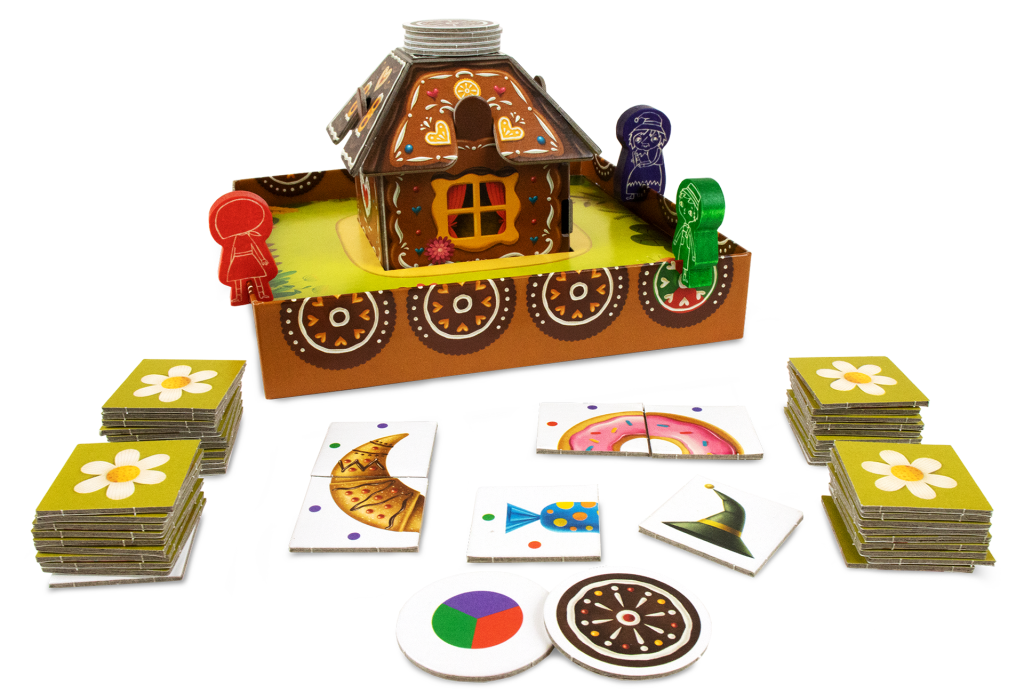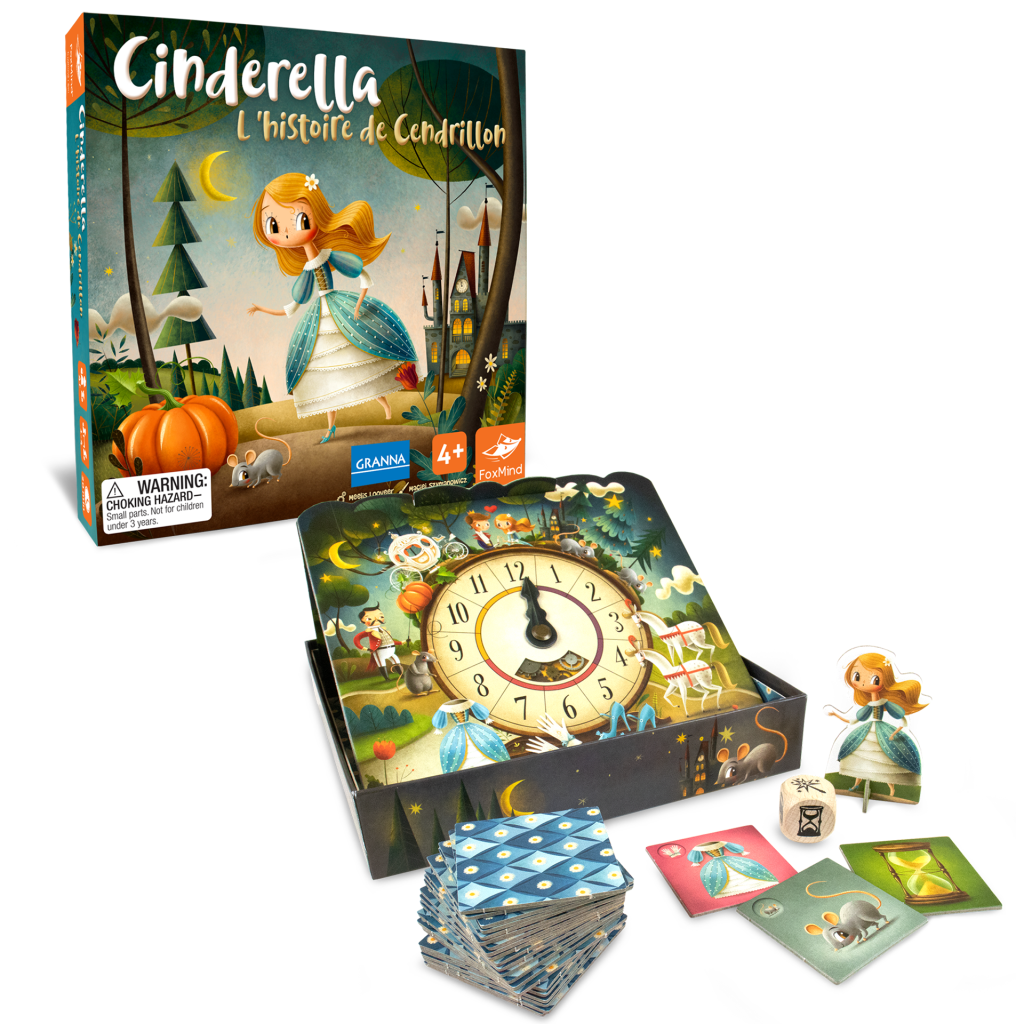Check out our preview of both titles.
FoxMind, the company behind tabletop games like Last Mouse Lost and ConeZilla, recently released two new titles inspired by classic fairy tales: Hansel & Gretel and Cinderella.
Hansel & Gretel is a cooperative game for 2-4 players with a recommended age of 6+. The game challenges players to collect five Gingerbread Tokens from a house made of treats while watching out for the witch Baba Yaga.

During each round, players will play Candy Tiles to the center of the gameplay area. Some of these Candy Tiles picture complete treats (like a piece of chocolate), while others picture part of a treat (like a scoop of ice cream with only the top of a cone). If players place Candy Tiles in such a way as to form a complete treat, they can take a Gingerbread Token from the roof of the house.
Each Candy Tile also has one or more colorful dots on its outside edges. At the end of each round, players will move the pawns representing Hansel, Gretel, and Baba Yaga around the board based on the quantity and colors of these dots.
If Baba Yaga manages to catch Hansel or Gretel as the pawns move around the board, the players will lose. Similarly, if one of the children’s pawns moves too quickly and catches up to (or passes) Baba Yaga on the board, players will also lose. If players can collect five Gingerbread Tokens before being captured by or catching up to Baba Yaga, they’ll win the game.
Each game of Hansel & Gretel has an estimated play time of 20 minutes.

Cinderella, meanwhile, is a cooperative memory matching game for 1-4 players with a recommended age of 4+. The game challenges players to find matching pairs of face-down tiles before the clock strikes midnight.
On each turn, the active player will roll the die and complete the required action based on the result. Specifically, if a player rolls a Magic Wand symbol, they can flip over one of the game’s tiles so that everyone can see the picture on the other side. Then, they’ll flip the tile back over.
If a player rolls a Cauldron symbol, they can peek at one tile without showing anyone else the picture on the back.
Finally, if a player rolls the Hourglass symbol, they can attempt to find a pair of matching tiles. To start, they’ll flip one tile over so that everyone can see the picture on the back. Then, the other players can each make a single suggestion related to where they think the matching tile is located. The active player will peek at the tile of their choice to see if they’ve made a match, without showing anyone else the picture. If the tiles match, they’re removed from the gameplay area. If not, the original tile is flipped back over. Regardless of whether the player successfully finds a matching pair, at the end of their turn, they’ll move the hand on the game’s clock one hour forward.
If players find all of the game’s matching pairs before the clock strikes 12, they’ll win the game. If not, they’ll lose.
In addition to a basic ruleset, Cinderella also includes rules for variant experiences that make the game more complex and/or affect its difficulty. Each game of Cinderella has an estimated play time of 20 minutes.
Hansel & Gretel and Cinderella are now available in stores (including Barnes & Noble) for $19.95 each. Gen Con attendees will be able to learn about both games, as well as additional titles from FoxMind, at the company’s booth, 2002. Gen Con takes place in Indianapolis from August 3-6, 2023.
Is your family interested in playing FoxMind’s new games? Let us know on Twitter at @superparenthq.
Brandy Berthelson has been writing about video games and technology since 2006, with her work appearing on sites including AOL Games, Digital Spy, and Adweek. When she’s not gaming, Brandy enjoys crafting, baking, and traveling with her husband.